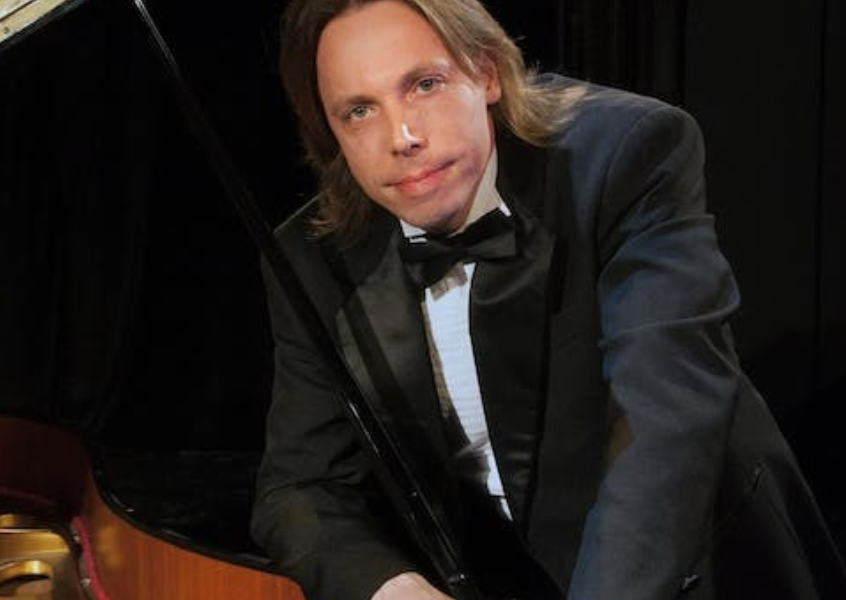AGP Agency New York Presents Péter Tóth in Review
Péter Tóth, pianist
Weill Recital Hall at Carnegie Hall, New York, NY
Sunday, October 9, 2022
Throngs of music lovers this Sunday traded afternoon sun for a 2 PM Weill Hall concert amid strangers with Covid masks and a program of intense, often dark, piano music of Franz Liszt (including the weighty Funerailles, the dark Ballade No. 2 in B minor, and the ponderous Chappelle de Guillaume Tell). Why, you may ask? Well, it appears that many knew in advance what kind of musicianship and virtuosity awaited, and it seemed well worth the trade. Though this reviewer is new to the pianism of Péter Tóth, it soon became clear that there are very good reasons he has such passionate supporters, including some who were ready to argue heatedly over the last orchestra seats, as overflow moved up to the balcony. (Though it always mystifies me to witness cantankerous behavior in pursuit of something as pure as, say, the music of Abbé Liszt, in a way it is heartening – suggesting possibly an urgent need for such live music, as opposed to the overhyped Auto-Tune shams that pass for music these days.)
Though the elegant and softspoken presenter Adam Gyorgy could barely be heard over the commotion to introduce the concert, he spoke glowingly from the stage about his friend Mr. Tóth, for reasons we would soon learn. Incidentally Adam Gyorgy is a fine pianist himself, whom this listener had the pleasure of reviewing back in 2011 – so with him, Mr. Tóth, and some others, the pianistic talent in the hall was approaching what might be termed “critical mass.” As for Péter Tóth, the printed program lists some of his important prizes (including from the Franz Liszt International Piano Competitions in Budapest in 2001), as well as recordings and concerts, but more biographical information can be found at his website, petertothpianist.com. In addition to the credentials and brilliance that we have come to expect from young prizewinners, we heard music-making of true passion and intelligence as well as profound dedication.
The Chapel of William Tell from Années de Pelerinage (Years of Pilgrimage) made a grand opening, a noble tribute to the legendary hero in a struggle for independence – and as resonant in today’s turbulent world as ever. Mr. Tóth captured its declamatory power to a tee, shaping its phrases with conviction and fine gradations of tone. This was not the blitz of brilliance that the uninitiated might expect at a Liszt recital but rather the musical meditation of Liszt the dreamer. Waldesrauschen (or Forest Murmurs) followed flowingly as a balm – a good programming choice, and one well suited to the hall piano with its rich middle register and rather glassy upper register. The performance was a model of balance and control.
The more substantial works came next, starting with Funerailles, and it was here that the expressive range and power of this pianist became clear – as well as his expert pacing. He showed that he is able to sustain a slow build for long stretches while keeping power in reserve to unleash at a work’s peak. Much credit here of course goes to Liszt himself, but even after years of hearing Funerailles, this listener still found surprise in the mounting left-hand triplets and ensuing octaves. They seemed simply effortless in this pianist’s hands – dazzling but with all focus on the music itself.
The Ballade No. 2 in B minor (written in 1853 just a few years after Funerailles) created still greater storms, with its ominous chromatic bass surges and explosive traversals of the keyboard. Not to dwell simply on the overt technical display, what impressed again was the control in shaping the music. Where called for, Mr. Tóth tapered his melodic phrases masterfully in every dynamic range. At several points, for example, pianissimo tones were prolonged such that, even when one thought it impossible to fade further, they resolved to still quieter ones – still projecting to the back rows. This listener apparently had a kindred musical spirit in the admiration for such control, as each time such a remarkable diminuendo occurred there as a slight gasp from a seat nearby; one need not be attuned to such wizardry to enjoy the magic, however, and the entire audience was silent in reverence (those little gasps notwithstanding).
More oceanic surges came in the Légende No. 2, St François de Paule Marchant Sur Les Flots (St. Francis of Paulus Walking over the Waves), and again the pianist was in his element. Mr. Tóth’s saint walked perhaps more stolidly and metrically than I’ve generally heard, so a few times one might have wanted just a shade more “stopping to smell the roses” (or aquatic flora in this case), but ultimately Mr. Tóth’s conception was persuasive. There was at the work’s peak just the triumph one wanted, so it is hard to argue about the path getting there.
The Hungarian Rhapsody No. 6 capped off the program in celebratory style. For those unfamiliar with this particular Rhapsody, it is the one with such rapid repeated octaves in the right hand that a pianist playing it might land himself in ER if not careful. It is only for the fearless, and Mr. Tóth was just that, with perhaps just a touch of his characteristic restraint at the octaves’ start to pace the excitement. It was a brilliant and altogether exhilarating close to a superb recital and was met with a hearty standing ovation.
An encore of Paderewski’s Nocturne in B-flat was the final reward, and it was meltingly beautiful. A man who before the concert had barked at someone “will you stop that?!” now appeared transported, eyes closed with a faint smile, while a woman in a wheelchair near me seemed to be nearly standing up to see better. Great music in the right hands can be transformative. Congratulations go to those who make it happen.

